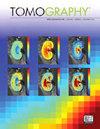锥形束计算机断层扫描评估正畸垂直方向参数与上中牙尖到鼻底和前鼻骨棘的距离之间的关系
IF 2.2
4区 医学
Q2 RADIOLOGY, NUCLEAR MEDICINE & MEDICAL IMAGING
引用次数: 0
摘要
本研究旨在使用锥形束计算机断层扫描(CBCT)检查垂直头测量值与上中牙(U1A)顶端至前鼻骨棘(ANS)和鼻底(NF)距离之间的关系。研究对象包括 122 名在 2011 年 1 月至 2019 年 6 月期间向正畸科提出申请的患者。使用 CBCT 测量了 U1A 与 NF 和 ANS 之间的距离。统计学意义以 p < 0.05 为准。在122人中,73.8%(n = 90)为女性,26.2%(n = 32)为男性,平均年龄为(22.8 ± 3.3)岁。NF-U1A 平均值与 N-Me、ANS-Me、ANS-Gn、S-Go 和 N-ANS 测量值之间存在统计学意义上的中度正相关(p < 0.01)。ANS-U1A 平均值与 Ar-Go-Me、总后角、N-Me、SN/GoGn 和 Y 轴角、ANS-Me 和 ANS-Gn 测量值之间存在统计学意义上的正相关(p < 0.01)。从 U1A 到 ANS 和 NF 的距离与正畸垂直方向参数有关。ANS-U1A和NF-U1A距离可作为参考点,从CBCT扫描中识别畸齿垂直生长模式。本文章由计算机程序翻译,如有差异,请以英文原文为准。
Cone-Beam Computerized Tomography Evaluation of the Relationship between Orthodontic Vertical Direction Parameters and the Distance from the Apex of the Upper Central Tooth to the Nasal Floor and Anterior Nasal Spine
The aim of this study was to examine the relationship between the vertical cephalometric values and the distance from the apex tip of the upper central tooth (U1A) to the anterior nasal spine (ANS) and nasal floor (NF) using cone-beam computerized tomography (CBCT). One hundred and twenty-two patients who applied to the Department of Orthodontics between January 2011 and June 2019 were included. The distances between the U1A and the NF and ANS were measured using CBCT. Statistical significance was considered as p < 0.05. Of the 122 individuals, 73.8% (n = 90) were female and 26.2% (n = 32) were male, with a mean age of 22.8 ± 3.3 years. A statistically significant moderate positive correlation was found between the mean NF-U1A values and the N-Me, ANS-Me, ANS-Gn, S-Go, and N-ANS measurements (p < 0.01). A statistically significant positive correlation was found between the mean ANS-U1A values and the Ar-Go-Me, total posterior angles, N-Me, SN/GoGn and Y-axis angle, ANS-Me, and ANS-Gn measurements (p < 0.01). The distance from the U1A to the ANS and NF was related to the orthodontic vertical direction parameters. The ANS-U1A and NF-U1A distances can serve as reference points for identifying the orthodontic vertical growth pattern from CBCT scans.
求助全文
通过发布文献求助,成功后即可免费获取论文全文。
去求助
来源期刊

Tomography
Medicine-Radiology, Nuclear Medicine and Imaging
CiteScore
2.70
自引率
10.50%
发文量
222
期刊介绍:
TomographyTM publishes basic (technical and pre-clinical) and clinical scientific articles which involve the advancement of imaging technologies. Tomography encompasses studies that use single or multiple imaging modalities including for example CT, US, PET, SPECT, MR and hyperpolarization technologies, as well as optical modalities (i.e. bioluminescence, photoacoustic, endomicroscopy, fiber optic imaging and optical computed tomography) in basic sciences, engineering, preclinical and clinical medicine.
Tomography also welcomes studies involving exploration and refinement of contrast mechanisms and image-derived metrics within and across modalities toward the development of novel imaging probes for image-based feedback and intervention. The use of imaging in biology and medicine provides unparalleled opportunities to noninvasively interrogate tissues to obtain real-time dynamic and quantitative information required for diagnosis and response to interventions and to follow evolving pathological conditions. As multi-modal studies and the complexities of imaging technologies themselves are ever increasing to provide advanced information to scientists and clinicians.
Tomography provides a unique publication venue allowing investigators the opportunity to more precisely communicate integrated findings related to the diverse and heterogeneous features associated with underlying anatomical, physiological, functional, metabolic and molecular genetic activities of normal and diseased tissue. Thus Tomography publishes peer-reviewed articles which involve the broad use of imaging of any tissue and disease type including both preclinical and clinical investigations. In addition, hardware/software along with chemical and molecular probe advances are welcome as they are deemed to significantly contribute towards the long-term goal of improving the overall impact of imaging on scientific and clinical discovery.
 求助内容:
求助内容: 应助结果提醒方式:
应助结果提醒方式:


